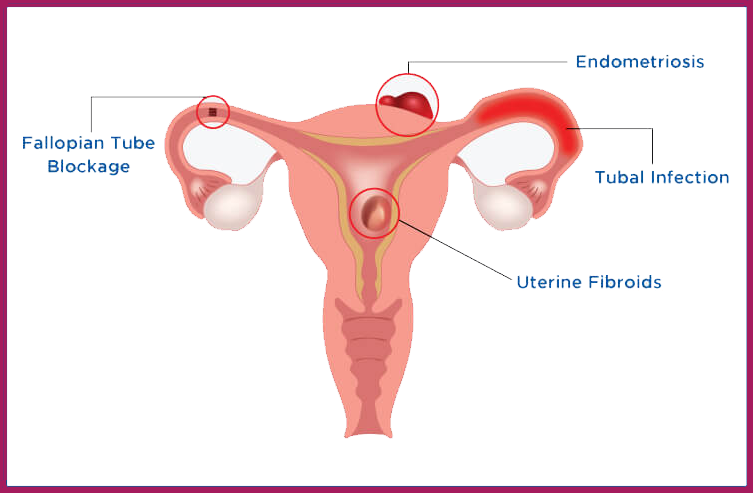Female Infertility
Female infertility is a contributing factor in almost half of all infertility cases in couples and usually the first to get addressed considering that women approach their gynecologist and raise the issue early.
FEMALE INFERTILITY CAUSES
FEMALE INFERTILITY DIAGNOSIS
FEMALE INFERTILITY TREATMENT
ASSISTED REPRODUCTION SERVICES
PCOS – POLYCYSTIC OVARY SYNDROME
Female Infertility Causes
- Ovulation Disorders
- Blocked /Damaged Fallopian Tubes
- Uterine Disorders
- Age related infertility considering that a woman’s fertility naturally tends to decrease with age
Ovulatory Disorders
Ovulatory problems account for 20 to 30% of infertility cases. An adult woman ovulates every 25 to 32 days. Ovulation is actually a process of maturing eggs that have been “resting” in the ovaries since birth. Each day throughout a woman’s life until she reaches menopause a few eggs move from the “resting” state into an “active” state.
Fallopian Tube Obstruction
is a major cause of female infertility. Blocked fallopian tubes are unable to let the ovum and the sperm converge, thus making fertilization impossible. Fallopian tubes are also known as oviducts, uterine tubes and salpinges.
Uterine Disorders
The uterus or womb is the place where a baby grows when a woman is pregnant. The disorders can be fibroids, adenomyosis, polyps, cancer, and infection causing a defective implantation.
At NewLife Advanced Fertility Center Fertility, we take a comprehensive approach to addressing infertility in women and conduct various diagnostic tests before identifying the issue and offering treatments.
Female infertility can be difficult to diagnose. After a full evaluation, our physician will provide you with a reasonable idea of your chances of conceiving using various treatment options, side effects of the treatments, costs and the risk of multiple births which increase with some infertility treatments.The patient will also have a clear idea of the success rates that could be expected, approach and a particular treatment plan.
Some causes of infertility like endometriosis can only be diagnosed with laparoscopy. It allows the doctor to not only see what is inside but also treat some causes of infertility allowing you to get pregnant naturally or with fertility treatments.
Female Infertility Diagnosis
Hormonal Profile
Why Are These Hormone Levels Important?
Who Should Be Tested?
What Does The Test Include?
Pelvic USG
A pelvic ultrasound uses sound waves to make a picture of the organs and structures in the lower belly (pelvis).
A pelvic ultrasound is done to look at the ovaries, uterus, cervix and diseased fallopian tubes of a woman (female organs).
Hysterosalpingogram
A hysterosalpingogram (HSG) is an X-ray test that looks at the inside of the uterus and fallopian tubes and the area around them. During a hysterosalpingogram, a dye (contrast material) is put through a thin tube that is put through the vagina and into the uterus. As the uterus and the fallopian tubes are hooked together, the dye will flow into the fallopian tubes. Pictures are taken using a steady beam of X-ray (fluoroscopy) as the dye passes through the uterus and fallopian tubes. The pictures can show problems such as an injury or abnormal structure of the uterus or fallopian tubes, or a blockage that would prevent an early pregnancy moving through a fallopian tube to the uterus. A blockage also could prevent sperm from moving into a fallopian tube and joining (fertilizing) an egg. A hysterosalpingogram also may find problems on the inside of the uterus that prevent a fertilized egg from attaching (implanting) to the uterine wall.


